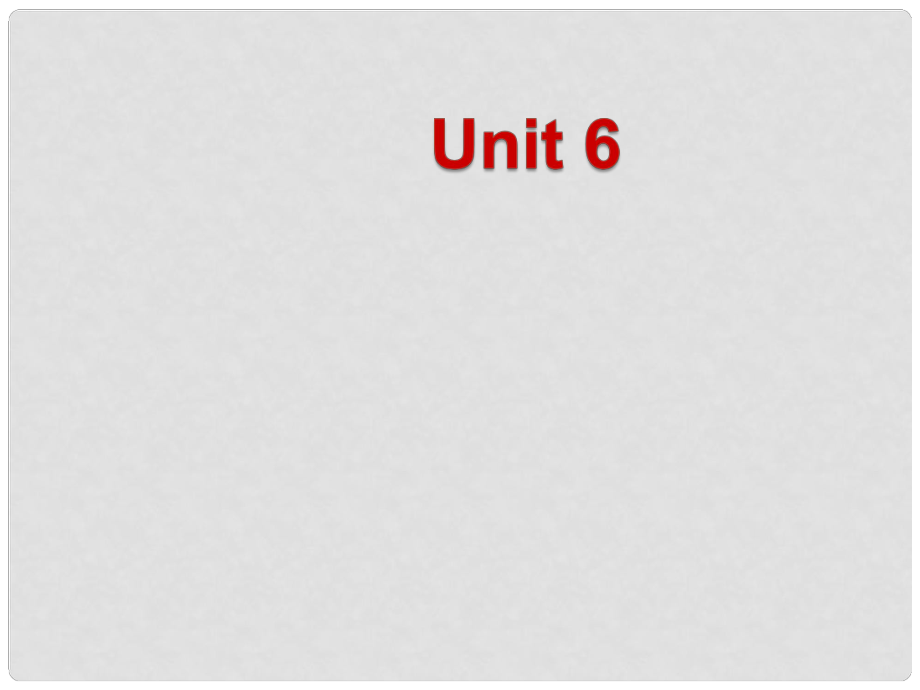《陜西省神木縣大保當(dāng)初級中學(xué)七年級英語下冊 Unit 6 I’m watching TV課件5 (新版)人教新目標(biāo)版》由會員分享,可在線閱讀�����,更多相關(guān)《陜西省神木縣大保當(dāng)初級中學(xué)七年級英語下冊 Unit 6 I’m watching TV課件5 (新版)人教新目標(biāo)版(20頁珍藏版)》請在裝配圖網(wǎng)上搜索��。
1�、 Zhu Hui is a student from Shenzhen. Hes studying in the United States. Hes living with an American family. Today is Dragon Boat Festival. Its nine a.m. Zhu Huis family are at home. His mom and aunt are making zongzi. His dad and uncle are watching the boat races on TV. Its nine p.m. in New York and
2���、 its the night before the festival. But there isnt a Dragon Boat Festival in the US. Its just like any other night for Zhu Hui. The mother is reading a story to her children. The father is watching a soccer game on TV. Zhu Hui is talking on the phone to his cousin in Shenzhen.Dear Bob, Here is a pic
3��、ture of my family. We are all at home now. I am doing my homework. My parents _ in the living room. My grandfather _. My sister _.Jim Complete Jims letter.3a1. 先看所給的圖片提示����,明白每個人正做先看所給的圖片提示���,明白每個人正做的事情����。的事情��。2. 其次��,通讀全文,確定應(yīng)該寫的人物��。其次���,通讀全文����,確定應(yīng)該寫的人物�����?���?芍芍?���,Jim的父母親正在看電視;他的的父母親正在看電視��;他的爺爺正在讀報紙����;她的妹妹正在和朋友爺爺正在讀報紙;她的妹
4、妹正在和朋友打電話��。打電話��。3. 運(yùn)用現(xiàn)在進(jìn)行時態(tài)寫出正確的句子����。注運(yùn)用現(xiàn)在進(jìn)行時態(tài)寫出正確的句子。注意句子結(jié)構(gòu):意句子結(jié)構(gòu):be (am, is , are) + V. ing 形式��。特別是形式�。特別是be動詞的恰當(dāng)形式��。動詞的恰當(dāng)形式��。Dear Bob, Here is a picture of my family. We are all at home now. I am doing my homework. My parents _ in the living room. My grandfather _. My sister _.Jimis reading a newspaperar
5�����、e watching TVis talking on the phone with her friendBring in some photos of your own (or draw some pictures of you and your family or friends) and write about them.3b1. 這是一篇要求描寫人物活動的短文����。首先這是一篇要求描寫人物活動的短文。首先, 要要看所給的圖片提示����,明確每個人正做的事情��?�?此o的圖片提示�����,明確每個人正做的事情�。2. 看圖可知��,男孩正在做作業(yè)看圖可知��,男孩正在做作業(yè) ����,他的媽媽正在,他的媽媽正在洗衣服��;他的爸爸正
6���、在擦車�;他的奶奶正在讀洗衣服�;他的爸爸正在擦車�;他的奶奶正在讀報紙���;他的爺爺正在和朋友下中國象棋�。報紙�;他的爺爺正在和朋友下中國象棋。3. 運(yùn)用現(xiàn)在進(jìn)行時態(tài)寫出正確的句子���。注意句子運(yùn)用現(xiàn)在進(jìn)行時態(tài)寫出正確的句子�����。注意句子結(jié)構(gòu):結(jié)構(gòu):be (am, is , are) + V. ing 形式。特別是形式�����。特別是be動詞的恰當(dāng)形式��。動詞的恰當(dāng)形式���。4. 最后����,再通讀一遍自己的文章,看沒有錯誤��。最后��,再通讀一遍自己的文章�����,看沒有錯誤�。 doing my homework. My mother is washing the clothes. My father is cleaning the car.
7、 My grandma is reading a newspaper. My grandpa is playing chess with his friend. play-playingmake-makingrun-runningread-readingwrite-writingtalk-talking watch-watching1 Add more words in the chart. Then write at least five sentences using the words. Jack is playing basketball now. live-livingshop-sh
8���、oppingcut-cuttingsit-sitting save-saving 1. Mike is watching sports on TV now.2. Linda is reading a book in her room.3. My sister is writing an email to her friend.4. Grace is living in Shanghai with a Chinese family. 5. My grandpa is sitting under the tree.6. My aunt is shopping at the supermarket
9��、now. 動詞現(xiàn)在分詞形式的構(gòu)成方式:動詞現(xiàn)在分詞形式的構(gòu)成方式:1. 一般情況下�����,直接在動詞后加一般情況下����,直接在動詞后加-ing���。例如:����。例如: do-doing, walk-walking, clean-cleaning。2. 以輔音字母加不發(fā)音的字母以輔音字母加不發(fā)音的字母e結(jié)尾的����,去結(jié)尾的,去e���, 再加再加-ing�。例如:�����。例如: write-writing, make-making, save-saving 3. 在重讀閉音節(jié)里���,以一個輔音字母結(jié)尾的�����,在重讀閉音節(jié)里,以一個輔音字母結(jié)尾的��, 雙寫該輔音字母再加雙寫該輔音字母再加-ing����。例如:���。例如: run-running, sh
10、op-shopping, sit-sitting1. drink _ 2. listen _3. use _ 4. make _5. shop _ 6. exercise _7. sit _ 8. run _9. study _ 10. brush _drinkingmakinglisteningusingshopping exercisingstudyingsittingrunningbrushing 2 Write questions to complete conversation. A: Hey, Bob! _? (what)B: Im listening to the radio.A
11�����、: _ (play soccer) B: Sounds good, but this talk show is interesting. A: _? (what, Tony)B: Oh, hes studying for a test. A: _ (Steve, too)B: No, hes not. I think he can play soccer with you.Is Steve studying, too?What is Tony doing nowWhat are you doingLets play soccer.A: Hi, Eric._?B: _. A: Lets _. B
12���、: But this book is really interesting. A: _? (brother, too)B: No, he isnt. _. A: Then what is Peter doing?B: Oh. _. He can play basketball with you. Is your brother reading, tooplay basketballWhat are you doing nowIm reading a book Hes taking a shower nowLook at the pictures and fill in the blanks.Hes watching TV now2. Write a short passage to describe what your family members are doing now.1. Remember how to add “ing” to a verb.
 陜西省神木縣大保當(dāng)初級中學(xué)七年級英語下冊 Unit 6 I’m watching TV課件5 (新版)人教新目標(biāo)版
陜西省神木縣大保當(dāng)初級中學(xué)七年級英語下冊 Unit 6 I’m watching TV課件5 (新版)人教新目標(biāo)版

